The SUV segment continues to grow, offering consumers a vast array of choices that meet diverse needs and preferences. Among the most popular options are the Toyota RAV4 and the Volvo XC40. While both vehicles are designed for everyday comfort and utility, they come with distinct characteristics that are worth exploring. This article offers a detailed comparison between these two formidable contenders in the compact SUV market.
Toyota RAV4 vs Volvo XC40 – Differences & prices compared
Compare performance, boot capacity, efficiency and price at a glance.
Find out which car is the better choice for you – Toyota RAV4 or Volvo XC40?
Powertrain and Performance
The Toyota RAV4 comes equipped with a variety of powertrain options, including full hybrid and plug-in hybrid configurations. The hybrid variants generate a maximum power output of up to 218 HP, while the plug-in model reaches an impressive 306 HP. Its acceleration performance allows the RAV4 to sprint from 0-100 km/h in as little as 6 seconds, making it competitive in its class.
In contrast, the Volvo XC40 is powered by a petrol MHEV engine, offering power output options of 163 HP to 197 HP. While the XC40 showcases commendable acceleration with figures of 7.6 to 8.6 seconds for the 0-100 km/h sprint, it does not quite match the performance benchmarks set by the RAV4 hybrids.
Efficiency and Fuel Consumption
When it comes to fuel efficiency, the Toyota RAV4 stands out with consumption rates as low as 1 L/100 km for its plug-in hybrid variant. The hybrid versions achieve rates of approximately 5.6 L/100 km, making it an excellent choice for eco-conscious drivers.
On the other hand, the Volvo XC40 has a fuel consumption of around 6.5 L/100 km. While not as efficient as the RAV4, the XC40's performance suitable for daily commutes and city driving caters to a different audience that may prioritize petrol performance over hybrid efficiency.
Interior Comfort and Cargo Space
Both vehicles offer spacious interiors designed for five passengers, but they differ in cargo space. The Toyota RAV4 boasts an impressive trunk capacity ranging from 520 to 580 liters, depending on the variant, which is ideal for families and road trips.
In comparison, the Volvo XC40 provides a trunk capacity of 452 liters. This difference may be noticeable for those who frequently transport larger items or luggage. However, the XC40 excels in upscale interior design and luxurious materials, making it feel more premium and inviting.
Dimensions and Exterior Design
Size-wise, the RAV4 measures 4600 mm in length, 1855 mm in width, and 1685 mm in height. This larger footprint provides a robust presence on the road and translates into its generous cargo area.
The Volvo XC40, while shorter at 4425 mm in length, slightly wider at 1863 mm, and lower at 1652 mm, offers a sporty and aggressive appearance. Its design features a slick silhouette accompanied by a unique front fascia that sets it apart in urban settings.
Safety Features and Technology
Safety is paramount in both models, as they come equipped with a series of advanced safety features. The Toyota RAV4 is renowned for its Toyota Safety Sense technology, which includes pre-collision systems, adaptive cruise control, and lane departure alerts.
The Volvo XC40, on the other hand, embodies Volvo's commitment to safety with its suite of standard safety features through the City Safety system, which detects potential collisions and acts to mitigate them. The XC40 also comes with an array of driver-assistance technologies that are designed to enhance safety and convenience.
Conclusion: Choosing Your Champion
Ultimately, the choice between the Toyota RAV4 and the Volvo XC40 comes down to personal preferences and priorities. If performance, fuel efficiency, and cargo space are at the top of your list, the RAV4 is difficult to beat. However, if you're looking for a premium vehicle that offers stylish design and advanced safety features, the XC40 is an excellent choice.
Both SUVs shine in their respective areas and are worthy contenders in the compact SUV market, aiming to provide comfort and performance to their drivers. Whether you lean towards the practical reliability of Toyota or the sophisticated elegance of Volvo, you're poised to enjoy the best of what modern automotive technology has to offer.
Here’s where it gets real: The technical differences in detail
Costs and Efficiency:
Price and efficiency are often the first things buyers look at. Here it becomes clear which model has the long-term edge – whether at the pump, the plug, or in purchase price.
Toyota RAV4 has a hardly perceptible advantage in terms of price – it starts at 35100 £, while the Volvo XC40 costs 36800 £. That’s a price difference of around 1628 £.
Fuel consumption also shows a difference: Toyota RAV4 manages with 1 L and is therefore clearly more efficient than the Volvo XC40 with 6.50 L. The difference is about 5.50 L per 100 km.
Engine and Performance:
Power, torque and acceleration are the classic benchmarks for car enthusiasts – and here, some clear differences start to show.
When it comes to engine power, the Toyota RAV4 has a distinct edge – offering 306 HP compared to 197 HP. That’s roughly 109 HP more horsepower.
In acceleration from 0 to 100 km/h, the Toyota RAV4 is noticeable quicker – completing the sprint in 6 s, while the Volvo XC40 takes 7.60 s. That’s about 1.60 s faster.
There’s no difference in top speed – both reach 180 km/h.
Space and Everyday Use:
Whether family car or daily driver – which one offers more room, flexibility and comfort?
Both vehicles offer seating for 5 people.
In curb weight, Volvo XC40 is barely noticeable lighter – 1688 kg compared to 1745 kg. The difference is around 57 kg.
In terms of boot space, the Toyota RAV4 offers noticeable more room – 580 L compared to 452 L. That’s a difference of about 128 L.
In maximum load capacity, the Toyota RAV4 performs clearly perceptible better – up to 1690 L, which is about 362 L more than the Volvo XC40.
When it comes to payload, Toyota RAV4 somewhat takes the win – 600 kg compared to 532 kg. That’s a difference of about 68 kg.
Who wins the race?
The Toyota RAV4 proves to be leaves the rival little chance and therefore becomes our DriveDuel Champion!
Toyota RAV4 is the better all-rounder in this comparison.
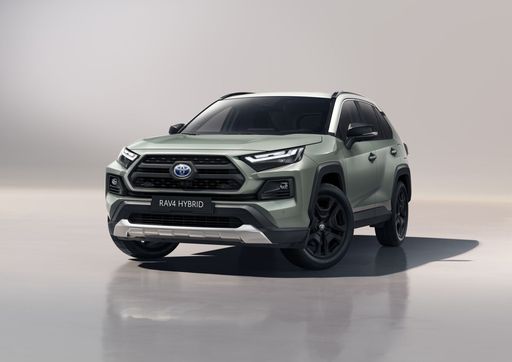 @ Toyota Motor Corporation
@ Toyota Motor Corporation
Toyota RAV4
Toyota RAV4
The Toyota RAV4 feels like a sensible friend on the road, marrying dependable practicality with a dash of SUV personality that keeps daily driving from turning dull. Comfortable and easy to live with, it looks tough without shouting and quietly gets the job done — a sensible pick for buyers who want versatility without drama.
details @ Toyota Motor Corporation
@ Toyota Motor Corporation
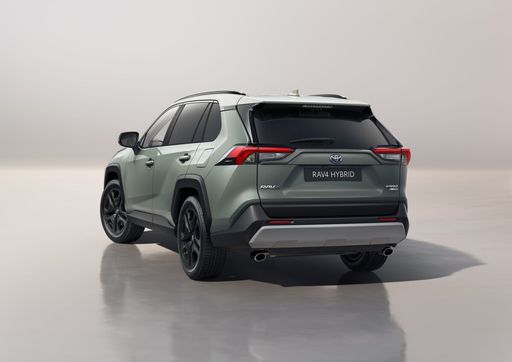 @ Toyota Motor Corporation
@ Toyota Motor Corporation
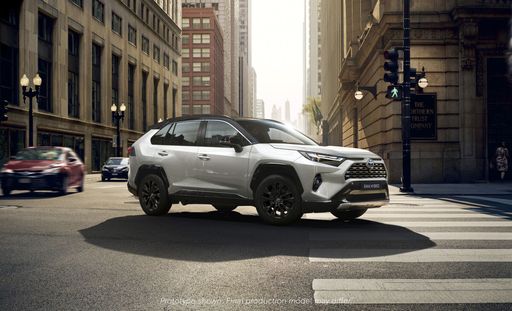 @ Toyota Motor Corporation
@ Toyota Motor Corporation
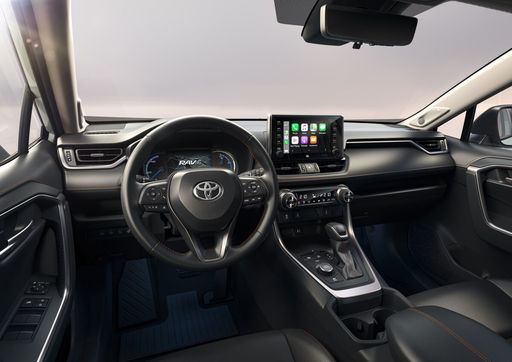 @ Toyota Motor Corporation
@ Toyota Motor Corporation
Volvo XC40
The Volvo XC40 wraps Scandinavian minimalism into a compact, city-ready SUV with a premium cabin that feels both practical and grown-up. It will suit buyers who prize safety, clever storage and a composed ride, proving that small dimensions don't mean small personality.
details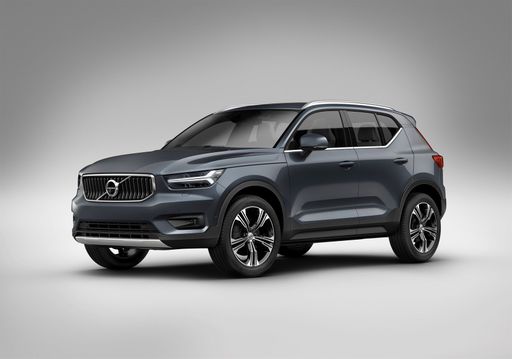 @ Volvo Cars
@ Volvo Cars
 @ Volvo Cars
@ Volvo Cars
 @ Volvo Cars
@ Volvo Cars
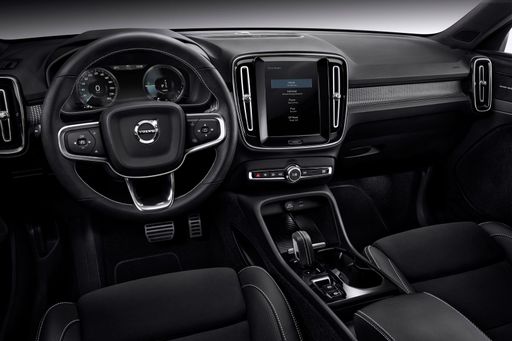 @ Volvo Cars
@ Volvo Cars
 @ Volvo Cars
@ Volvo Cars
 @ Toyota Motor Corporation
@ Toyota Motor Corporation
|
 @ Volvo Cars
@ Volvo Cars
|
|
|
|
Costs and Consumption |
|
|---|---|
|
Price
35100 - 55700 £
|
Price
36800 - 47200 £
|
|
Consumption L/100km
1 - 5.6 L
|
Consumption L/100km
6.50 L
|
|
Consumption kWh/100km
-
|
Consumption kWh/100km
-
|
|
Electric Range
75 km
|
Electric Range
-
|
|
Battery Capacity
-
|
Battery Capacity
-
|
|
co2
22 - 128 g/km
|
co2
147 - 148 g/km
|
|
Fuel tank capacity
55 L
|
Fuel tank capacity
54 L
|
Dimensions and Body |
|
|---|---|
|
Body Type
SUV
|
Body Type
SUV
|
|
Seats
5
|
Seats
5
|
|
Doors
5
|
Doors
5
|
|
Curb weight
1745 - 1910 kg
|
Curb weight
1688 kg
|
|
Trunk capacity
520 - 580 L
|
Trunk capacity
452 L
|
|
Length
4600 mm
|
Length
4425 mm
|
|
Width
1855 mm
|
Width
1863 mm
|
|
Height
1685 mm
|
Height
1652 mm
|
|
Max trunk capacity
1604 - 1690 L
|
Max trunk capacity
1328 L
|
|
Payload
390 - 600 kg
|
Payload
532 kg
|
Engine and Performance |
|
|---|---|
|
Engine Type
Full Hybrid, Plugin Hybrid
|
Engine Type
Petrol MHEV
|
|
Transmission
Automatic
|
Transmission
Automatic
|
|
Transmission Detail
CVT
|
Transmission Detail
Dual-Clutch Automatic
|
|
Drive Type
Front-Wheel Drive, All-Wheel Drive
|
Drive Type
Front-Wheel Drive
|
|
Power HP
218 - 306 HP
|
Power HP
163 - 197 HP
|
|
Acceleration 0-100km/h
6 - 8.4 s
|
Acceleration 0-100km/h
7.6 - 8.6 s
|
|
Max Speed
180 km/h
|
Max Speed
180 km/h
|
|
Torque
-
|
Torque
265 - 300 Nm
|
|
Number of Cylinders
4
|
Number of Cylinders
4
|
|
Power kW
160 - 225 kW
|
Power kW
120 - 145 kW
|
|
Engine capacity
2487 cm3
|
Engine capacity
1969 cm3
|
General |
|
|---|---|
|
Model Year
2024 - 2025
|
Model Year
2024
|
|
CO2 Efficiency Class
D, B
|
CO2 Efficiency Class
E
|
|
Brand
Toyota
|
Brand
Volvo
|
What drive types are available for the Toyota RAV4?
Available configurations include Front-Wheel Drive or All-Wheel Drive.
The prices and data displayed are estimates based on German list prices and may vary by country. This information is not legally binding.
